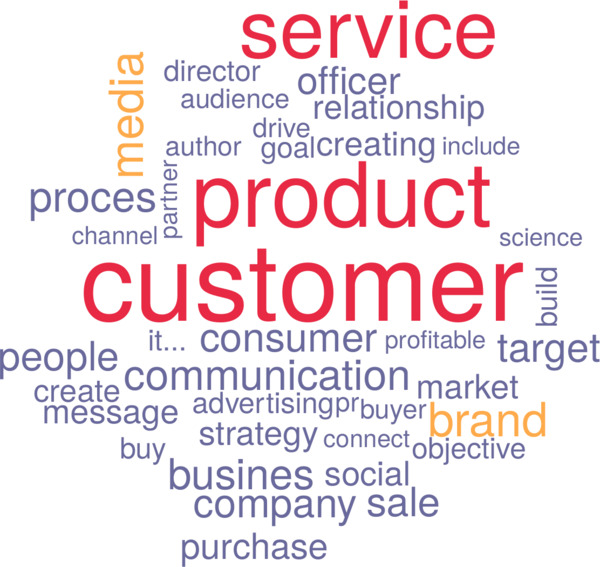
Marketing for Engineers: Engineering Customer Satisfaction

Peter Prevos |
1231 words | 6 minutes
Share this content
Like most engineers, I completed an MBA to broaden my skills. At our first marketing lecture, the professor asked us why we did this subject. My friend and I facetiously responded that marketing plays no role in my job as an engineer. Professor Walker subsequently proved me wrong and convinced me that marketing for engineers is as important as knowing technology. This article discusses some of the basic principles of marketing and how this relates to engineers. The following four topics delve a little deeper into what marketing is and how it relates to the work of engineers.
Definition of Marketing
When asking people to mention a word that they associate with marketing, they will most certainly mention advertising or selling. The scope of the marketing team in an engineering project is often limited to promoting and selling the product or service that the engineers create. The reach of marketing is, however, broader than communicating with potential and existing customers.
Just like any other social concept, marketing can mean different things. Blogger Heidi Cohen has collected 72 marketing definitions from professional and academic sources. I have downloaded these definitions and visualised them in a word cloud. The more often a word is used in these definitions, the larger the text. This diagram thus shows that marketing is about products and services and customers. The cloud shows that advertising is only a small part of marketing.

These definitions position marketing as a process to sell products and services to customers. Engineering is, however, often about more than selling stuff. Many disciplines of engineering seek to improve society overall. The American Marketing Association provides a more formal and broader definition of marketing:
Marketing is the activity, set of institutions, and processes for creating, communicating, delivering, and exchanging offerings that have value for customers, clients, partners, and society at large.
American Marketing Association (2013).
This definition consists of three major parts:
- A process
- that has value
- for beneficiaries.
The following three sections of this article discuss these three aspects of this definition concerning the work of engineers.
The Marketing Process
Most introductory text books about marketing start with the marketing mix. This is a tool to structure marketing activities that helps managers considers all relevant aspects of their project. One of the most common versions of the marketing mix is the so-called 4Ps of marketing:
- Product (creating)
- Promotion (communicating)
- Place (distribution)
- Price (exchange)
The terms in brackets show how the AMA definition of marketing relates to the marketing mix. These four aspects of marketing are a simplification of the process of marketing, but they provide a good stating point to understand the foundations.
Product
The product is the most obvious aspect of marketing for engineers. Designing and creating new products and services is the core job of an engineer. Although technology is important, marketing helps engineers to create better products.
Marketing helps engineers to create products that meet the needs of customers. Engineering focuses on the technical aspects of a product such as a car or a computer. Marketing tries to understand how customers extract value from these objects.
The first law of consumer behaviour is that customers buy stuff for what it means to them, not what it does. Consequently, this law implies that creating new products not only requires knowledge of engineering; it also requires engineers to understand psychology.

Place
The place component of the marketing mix can cover a range of things, such as a retail place such as a shop or a place of service, such as a barber shop. The place component also relates to the distribution of products from manufacturing to the customer. Supply chain logistics is a common problem for engineers who design facilities to ship products and services around the world or create infrastructure to manage e-commerce. The place component is therefore a common problem for engineers to solve.
Promotion
Advertising is the most visible aspects of marketing, which is the reason the two are often seen as synonymous. The need to promote a product in a competitive market is fairly obvious. Almost certainly, without advertising and other forms of promotion, any product will languish in obscurity.
The promotion dimension of the marketing mix includes all communication with the beneficiaries of the project, whether they are customers or the community overall. In public engineering projects, the promotion dimension includes engaging the community that will benefit from the engineering works.
Building infrastructure is a highly specialised task, and engineers can become so focused on the inherent complexity of their job that they forget to consider the people that are impacted by the project. Community engagement is a crucial aspect of any public engineering works that will require marketing skills.
Price
Determining the price of a project is a common task for engineers. Many engineers spend a lot of time estimating the cost of a future project or controlling the costs of works in progress. Engineering price estimates use technical considerations, such as the cost of materials and labour and external services.
When a marketer determines the price of a product or service, they don't only look at internal aspects, but also how much the customer is willing to pay. Setting the price of a market offering requires knowledge of psychology.
In technical, commercial projects, the technical craft of the cost estimator and the psychological knowledge of the marketer to determine the best possible price.
Defining Value
From an economic perspective, value is the difference between costs and benefits. Traditional models of economics limit this equation to monetary value. In contrast, the marketing perspective includes aspects beyond financial costs and benefits.
The benefits of a product are first that which the product does for the customer. A car has the obvious benefit of moving people and things from A to B. The service benefit is about the ease of using the product, after-sales support and so on. Lastly, the personal benefit relates to how the product makes people feel about owning or using it.
The cost equation of a product or service is not only the monetary cost of purchase and operation, but also time and psychological energy. The time cost that a consumer incurs relates to the level of convenience they get. The energy cost relates to possible frustrations because of badly designed products.
From this model it follows that engineers can maximise customer value of a product they create by minimising the cost the consumer and by increasing the benefits.

Beneficiaries
Marketing is traditionally only about customers and commercial relationships between buyers and sellers. Contemporary views of marketing are more inclusive and relate to every relationship where one party provides benefits to another. These new theories are certainly more useful to describe the contemporary complexities of commercial relationships.
The addition of society overall as beneficiary of marketing makes a lot of sense for engineers. Engineering is a method to improve the world in which we live; either through commercial products or public engineering. Whichever way, the purpose of good engineering is to add value to society overall.
Finally, marketing and engineering are perfect partners. Engineers that understand the principles of marketing are therefore able to maximise the value they provide to their customers, clients, partners, and society at large.
Share this content